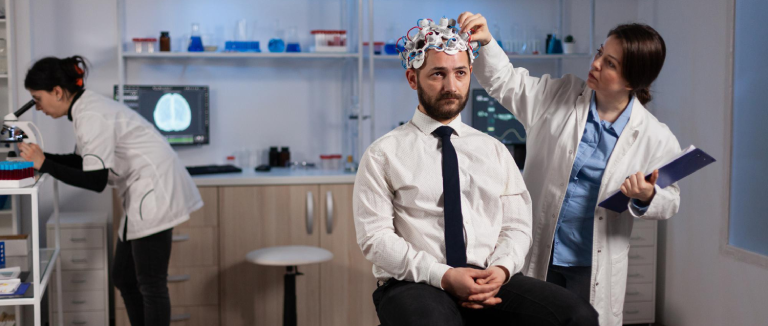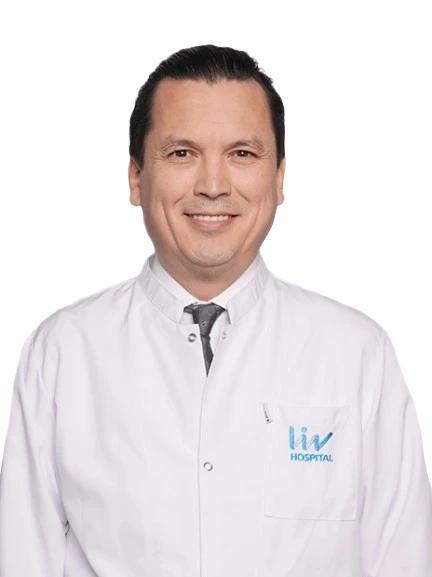Vagus Nerve Stimulator (VNS) Therapy for Drug-Resistant Epilepsy at Liv Hospital
When epilepsy does not respond to conventional medications, patients and families often look for reliable, science-backed solutions that can meaningfully reduce seizures and restore quality of life. Vagus nerve stimulator (VNS) therapy offers that possibility for many people living with drug-resistant epilepsy. At Liv Hospital, our interdisciplinary team provides comprehensive evaluation, precise surgical implantation, and ongoing postoperative care designed to maximize the benefits of VNS while prioritizing safety, comfort, and long-term support.
This expanded guide explains what epilepsy is, how it is typically treated, the definition of drug-resistant epilepsy, how vagus nerve stimulation works, who may benefit, and what to expect before, during, and after VNS surgery. Throughout this page, the informational content remains aligned with your original text, while clarity, structure, and detail are enhanced for readability.

What Is Epilepsy?
Epilepsy, also known as seizure disorder, is a neurological condition caused by abnormal electrochemical discharges in the brain's nerve cells. These abnormal discharges can lead to recurrent seizures that vary widely in type, duration, and severity. Some seizures may present as brief lapses in awareness, while others involve significant motor symptoms or loss of consciousness. Because epilepsy encompasses a spectrum of seizure types, diagnosis and treatment must be carefully tailored to each individual.
The prevalence of epilepsy in the general population is approximately 1%, which is a significant rate. This means that millions of people worldwide live with epilepsy, and a substantial portion of them manage their condition successfully with medication. However, for those whose seizures continue despite appropriate drug therapy, additional options such as surgery or VNS may be considered, depending on the underlying cause and clinical evaluation.
How is Epilepsy Treated?
Treatment options depend on the underlying cause of epilepsy. If diagnostic tests identify a tumor, vascular malformation, or a specific seizure focus in the brain, surgical removal of the cause is prioritized. For patients with normal brain imaging, medical therapy is the first-line treatment.
What is Drug-Resistant Epilepsy?
Approximately 60–65% of epilepsy patients achieve seizure control with medication. However, in 35–40% of cases, seizures continue despite the use of one or more antiepileptic drugs.
Drug-resistant epilepsy is defined as the persistence of seizures despite trying at least two different antiepileptic medications at appropriate doses for at least two years.
What Is a Vagus Nerve Stimulator (VNS)? How Does It Work?
First introduced in 1988, the vagus nerve stimulator has proven effective in patients with drug-resistant epilepsy and is now widely used around the world. VNS is a device-based therapy that delivers gentle electrical impulses to the vagus nerve in the neck. The vagus nerve carries signals to the brain, and these controlled pulses can help modulate brain networks implicated in seizure generation and spread.
The vagus nerve stimulator monitors changes in heart rate that may signal an impending seizure and delivers a mild electrical impulse to the vagus nerve in the neck. This signal travels to the brain, helping to suppress abnormal neuronal activity and either preventing the seizure completely or reducing its intensity. In clinical practice, patients may experience fewer seizures, shorter seizures, or less severe postictal symptoms. Some people also notice improved recovery times and better day-to-day functioning as their seizure burden decreases.
Although VNS does not involve brain surgery, it is a sophisticated neuromodulation therapy that requires careful programming and follow-up. After implantation, device settings are adjusted over time to optimize therapeutic effects while minimizing side effects, such as temporary changes in voice or throat sensations during stimulation. Many patients and families appreciate that VNS is designed to work alongside ongoing medical therapy, offering an additional layer of seizure control.

What Is VNS Surgery? How Is It Performed?
Vagus nerve stimulator surgery is offered to selected patients with drug-resistant epilepsy following thorough evaluations by specialists in Neurology, Psychiatry, and Neurosurgery. This procedure is especially beneficial for patients who have not responded to open brain surgery, are not suitable candidates for such operations, or wish to avoid the associated risks. The selection process is intended to ensure that VNS is an appropriate and potentially beneficial option within the patient’s overall treatment plan.
The vagus nerve stimulator procedure is performed under general anesthesia. A small incision is made on the left side of the neck, and using microscopic guidance, the vagus nerve is carefully exposed. The lead from the vagus nerve stimulator is wrapped around the nerve, and the connecting wire is tunneled under the skin to a pulse generator implanted beneath the chest near the heart. The surgery typically takes about 1 to 1.5 hours to complete.
After implantation, the device is not usually set to full therapeutic levels immediately. Instead, programming begins at conservative settings and is adjusted during outpatient follow-up visits. This gradual approach allows the clinical team to find an effective balance between seizure reduction and comfort, minimizing stimulation-related side effects. Over time, patients and caregivers are educated on the device’s features, including how it may respond to heart rate changes and how follow-up schedules support long-term optimization.
* Liv Hospital Editorial Board has contributed to the publication of this content .
* Contents of this page is for informational purposes only. Please consult your doctor for diagnosis and treatment. The content of this page does not include information on medicinal health care at Liv Hospital .
For more information about our academic and training initiatives, visit Liv Hospital Academy
Frequently Asked Questions
What is vagus nerve stimulator therapy?
Vagus nerve stimulator therapy is a treatment for drug-resistant epilepsy that uses mild electrical impulses to the vagus nerve in the neck to help control and reduce seizure activity.
Who can benefit from vagus nerve stimulator therapy?
This therapy is primarily for patients with epilepsy who do not respond to two or more antiepileptic medications or are not suitable candidates for brain surgery.
How does the vagus nerve stimulator work?
The device detects changes in heart rate that may signal an upcoming seizure and sends gentle electrical pulses through the vagus nerve to the brain to reduce seizure frequency and intensity.
What happens during VNS surgery?
During VNS surgery, a small device is implanted under the skin in the chest. A wire connects it to the vagus nerve in the neck, allowing electrical impulses to reach the brain.
Is vagus nerve stimulator surgery risky?
When performed by experienced surgeons, the procedure carries minimal risk. Most patients can eat, walk, and return home within 24 hours of surgery.
What are the possible complications after VNS surgery?
Complications are rare but may include infection, bleeding, or nerve irritation. These are minimized when the procedure is done in specialized centers by expert surgeons.
How long does the VNS device last?
Most VNS devices last between four and seven years, depending on use. When the battery depletes, the device can be replaced under local anesthesia.
Will seizures stop completely after VNS therapy?
The goal of VNS therapy is to significantly reduce the frequency and severity of seizures, helping patients live more comfortably and maintain daily activities.
What is the recovery process after VNS surgery?
Recovery is typically quick. Patients are monitored overnight and usually return home the next day. Full recovery occurs within one to two weeks.
Why choose Liv Hospital for VNS therapy?
Liv Hospital in Türkiye provides advanced neurological care with expert neurosurgeons, neurologists, and cutting-edge technology for safe and effective vagus nerve stimulator therapy.


